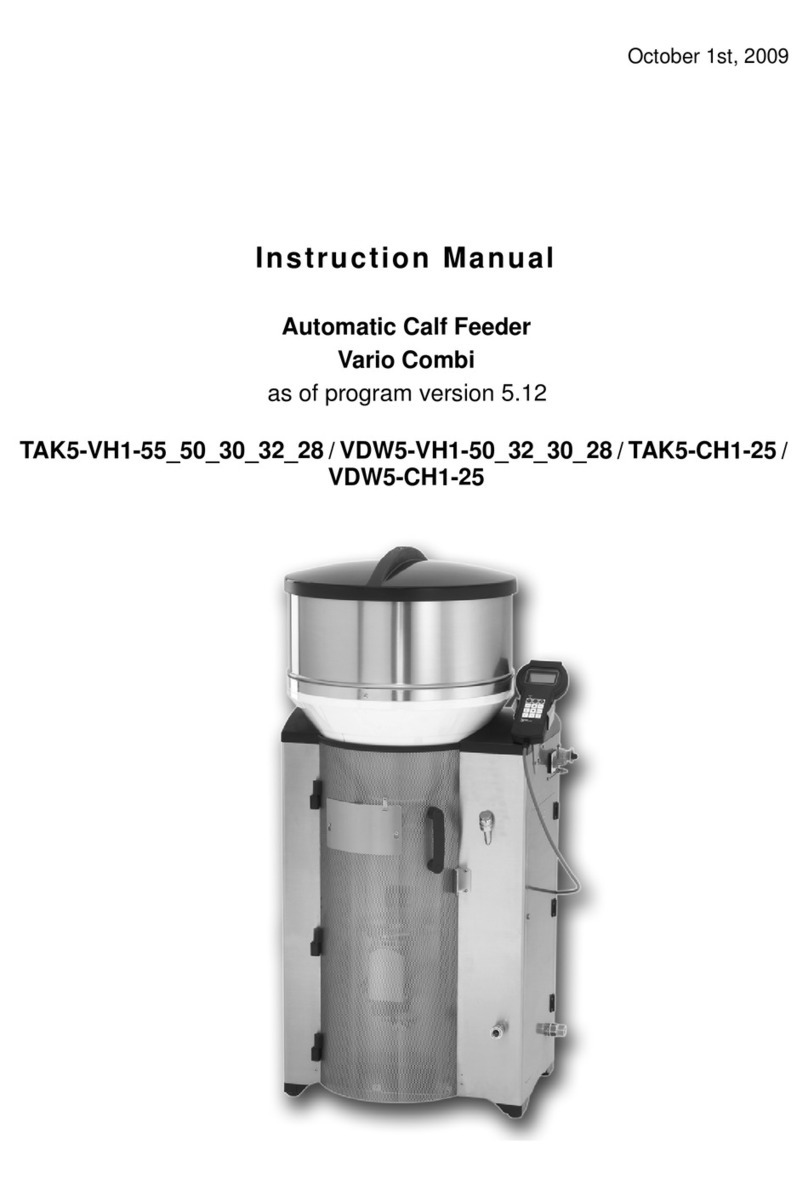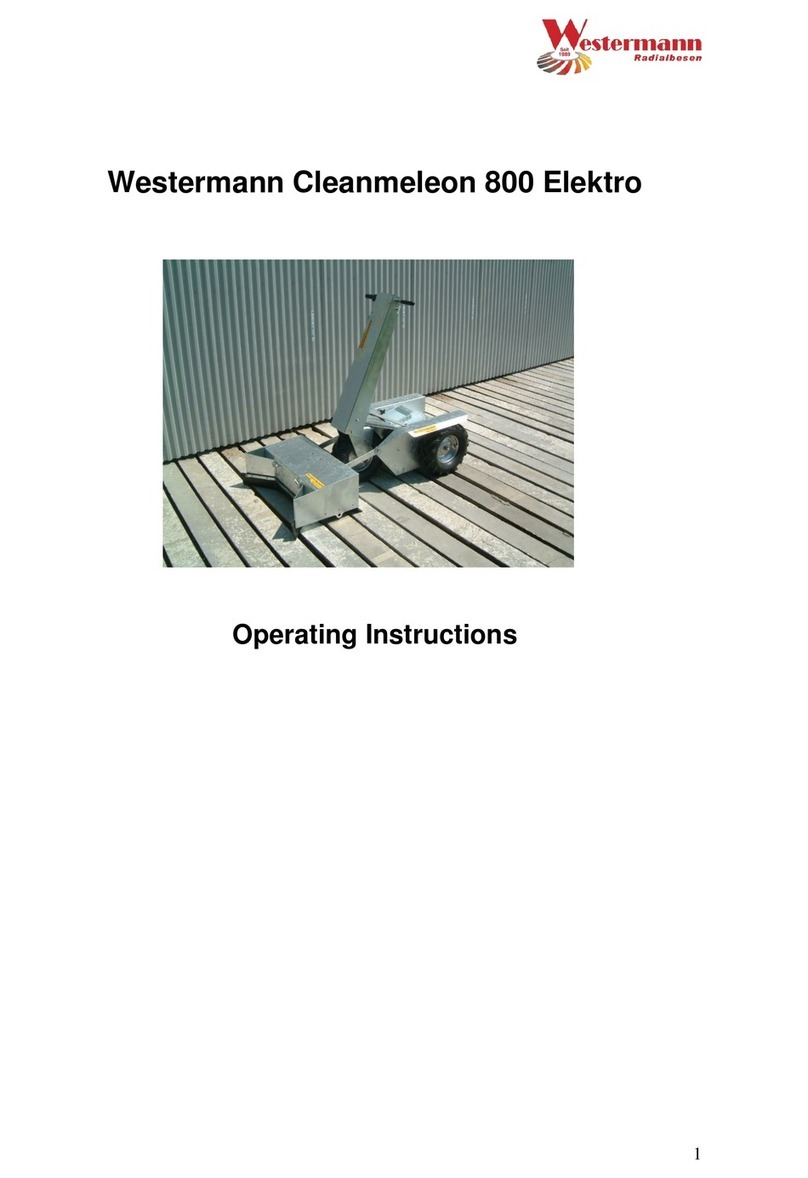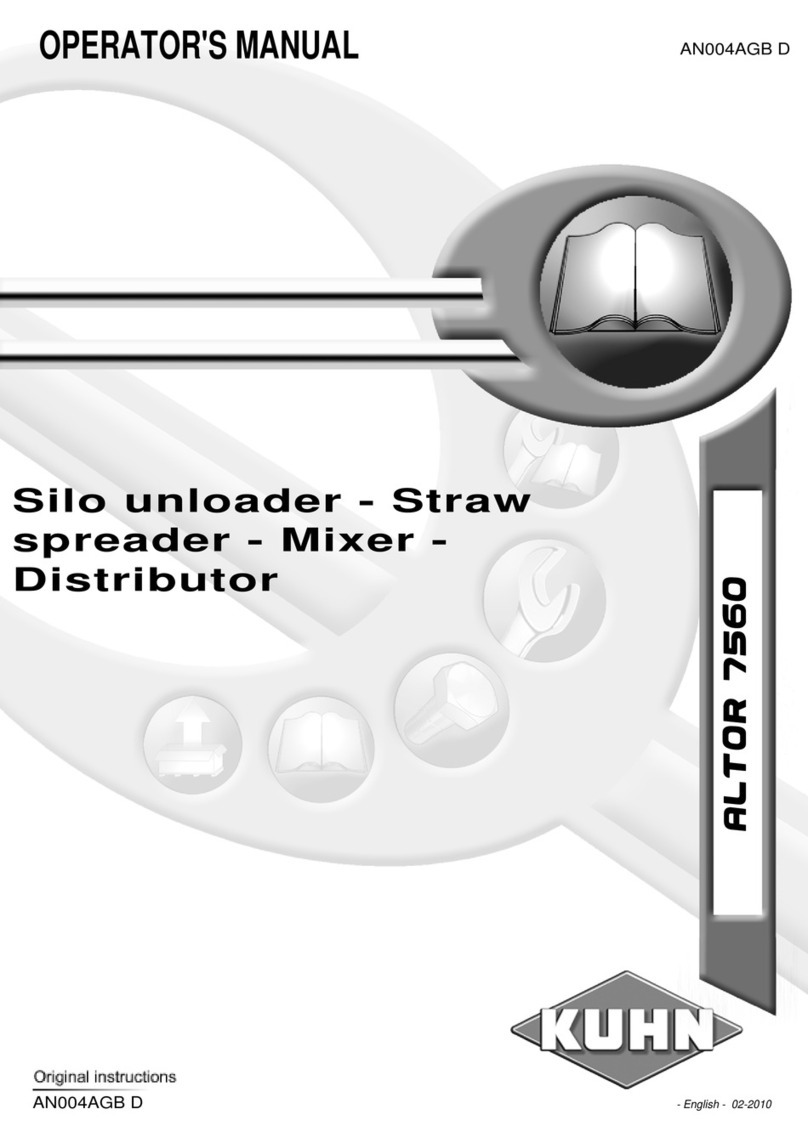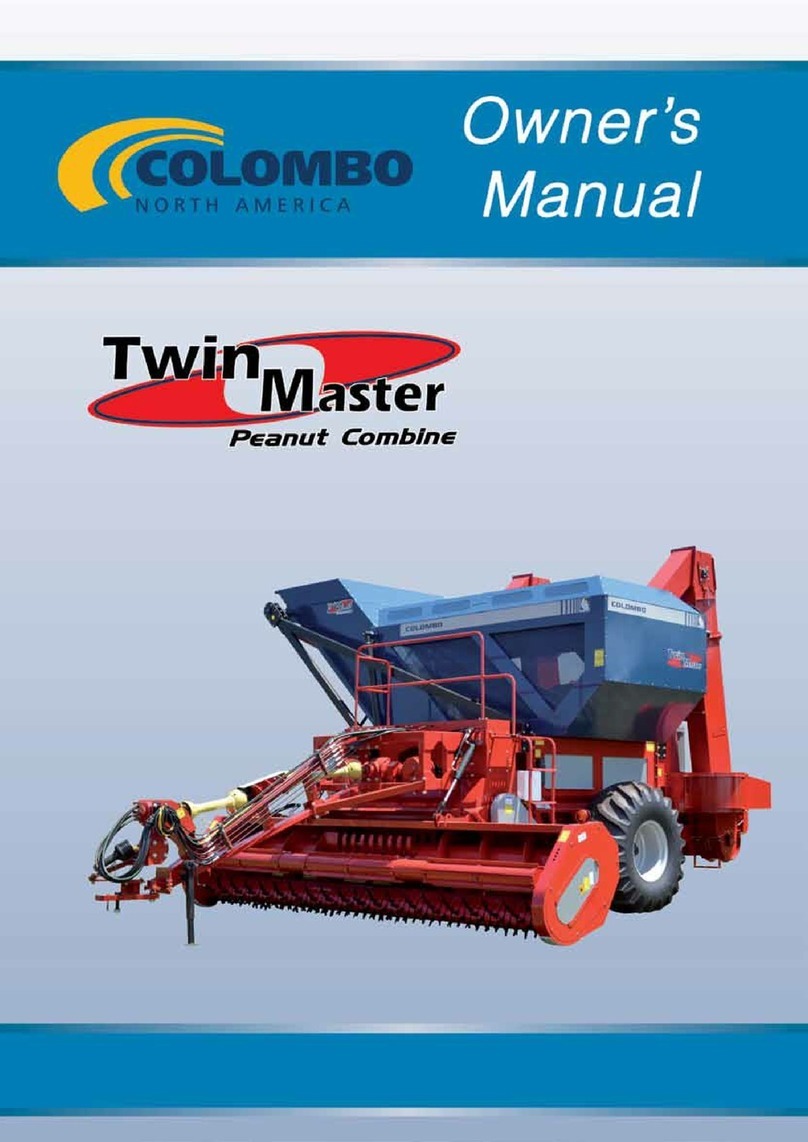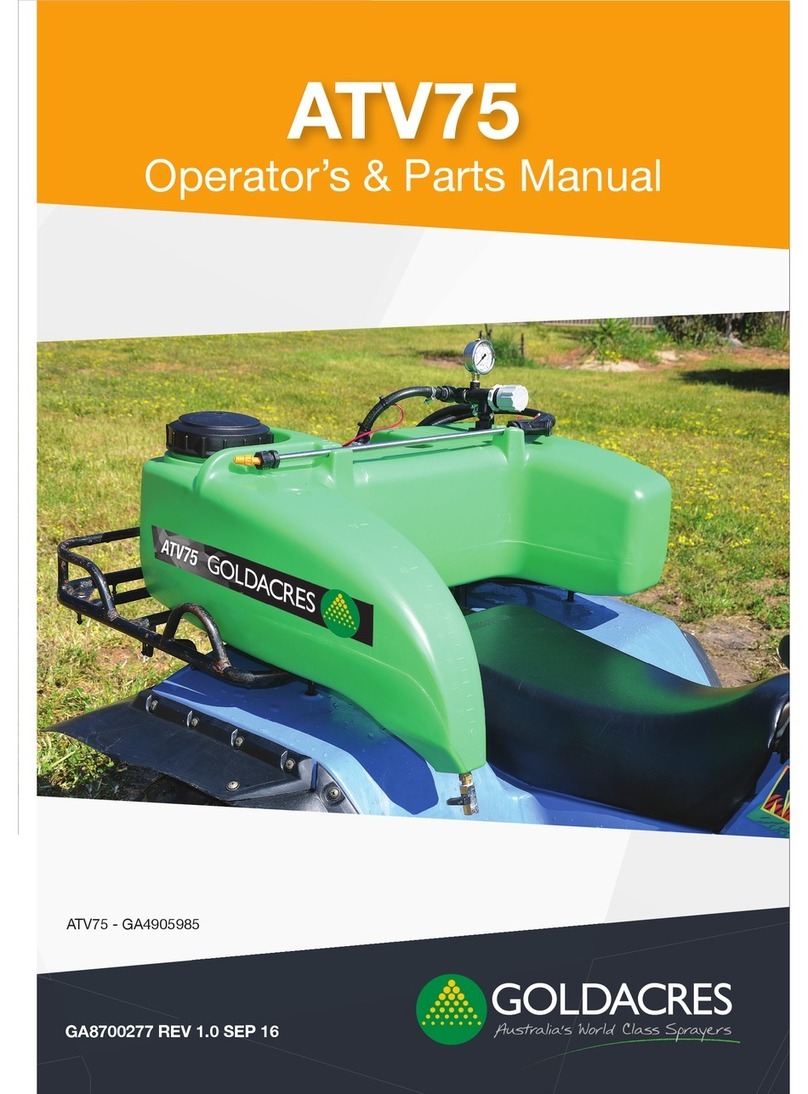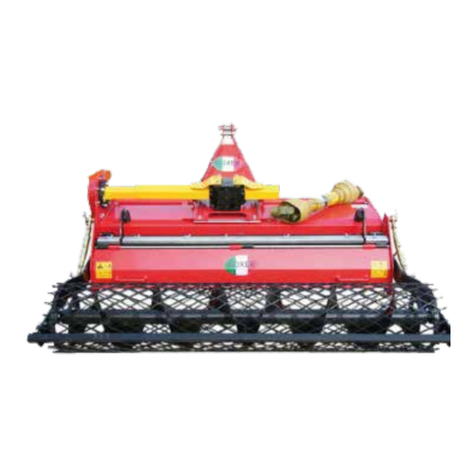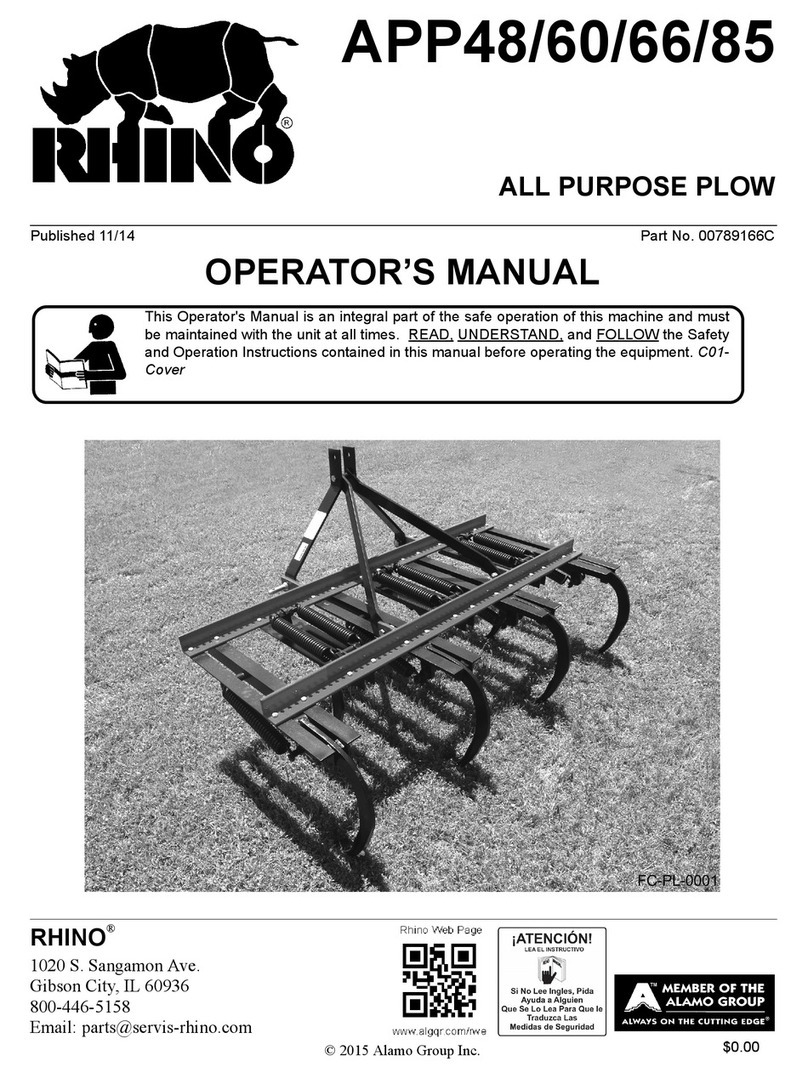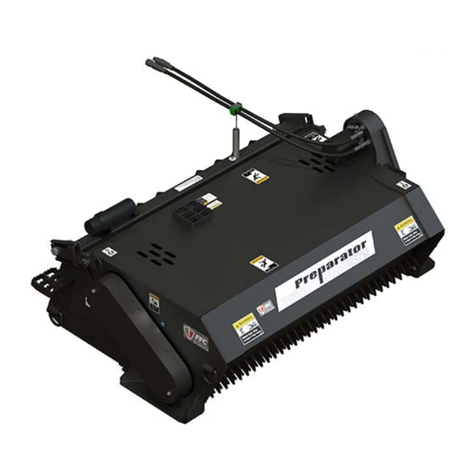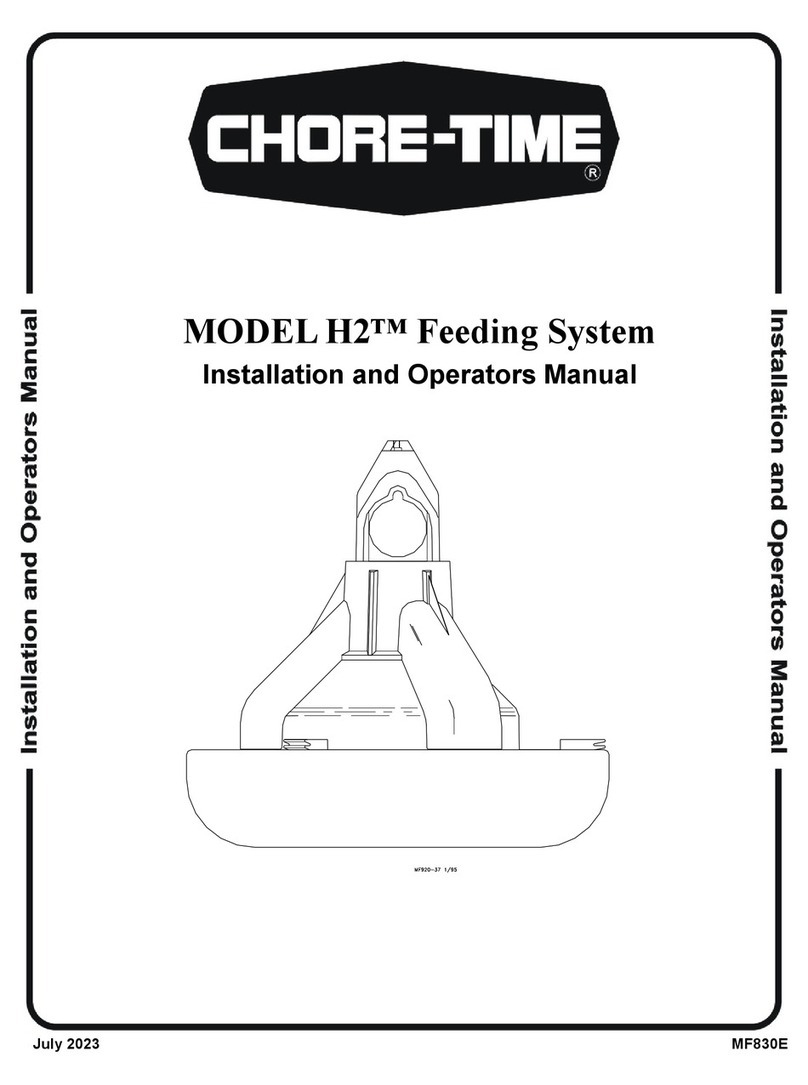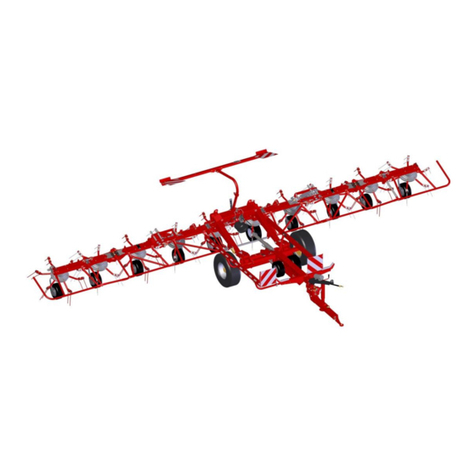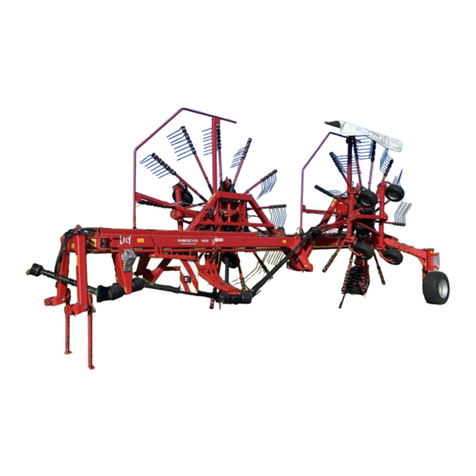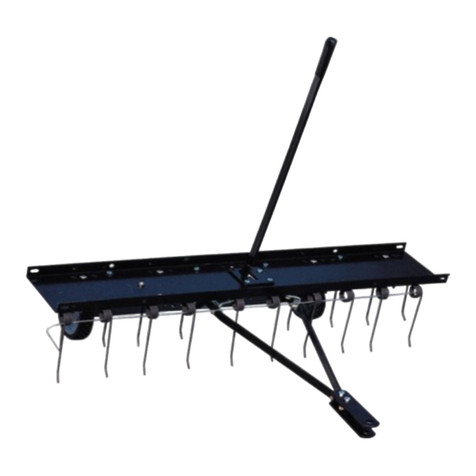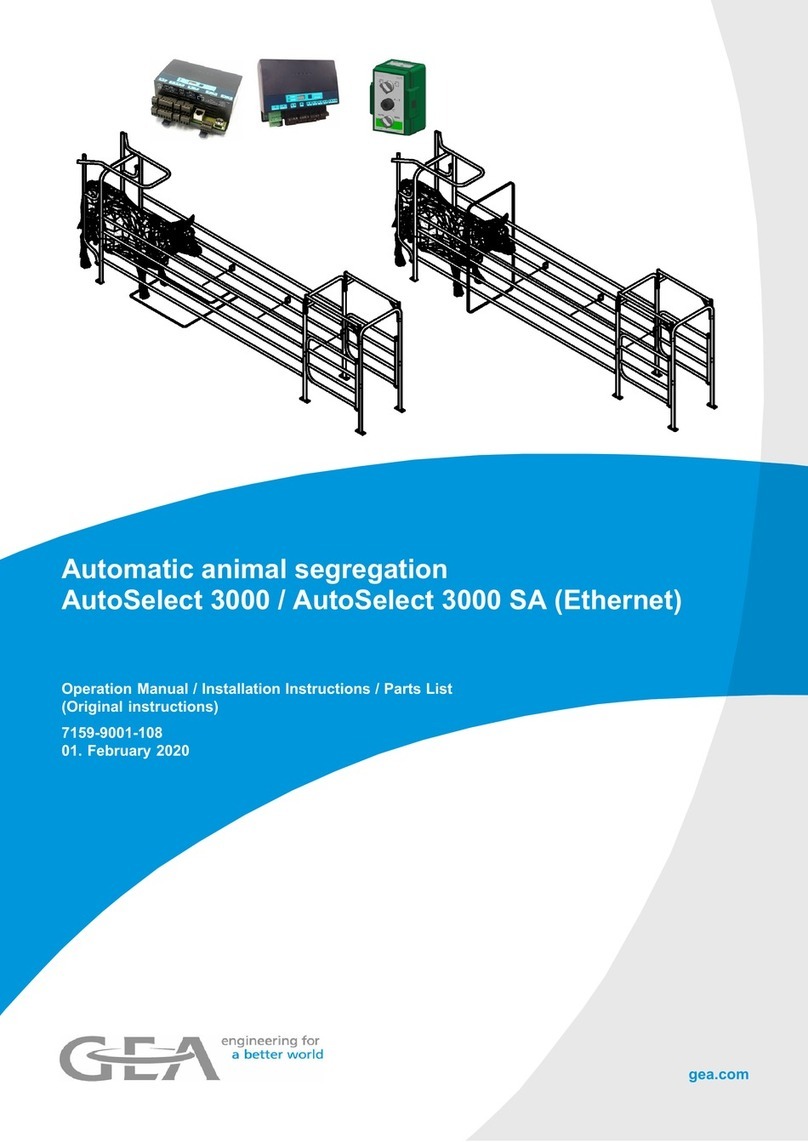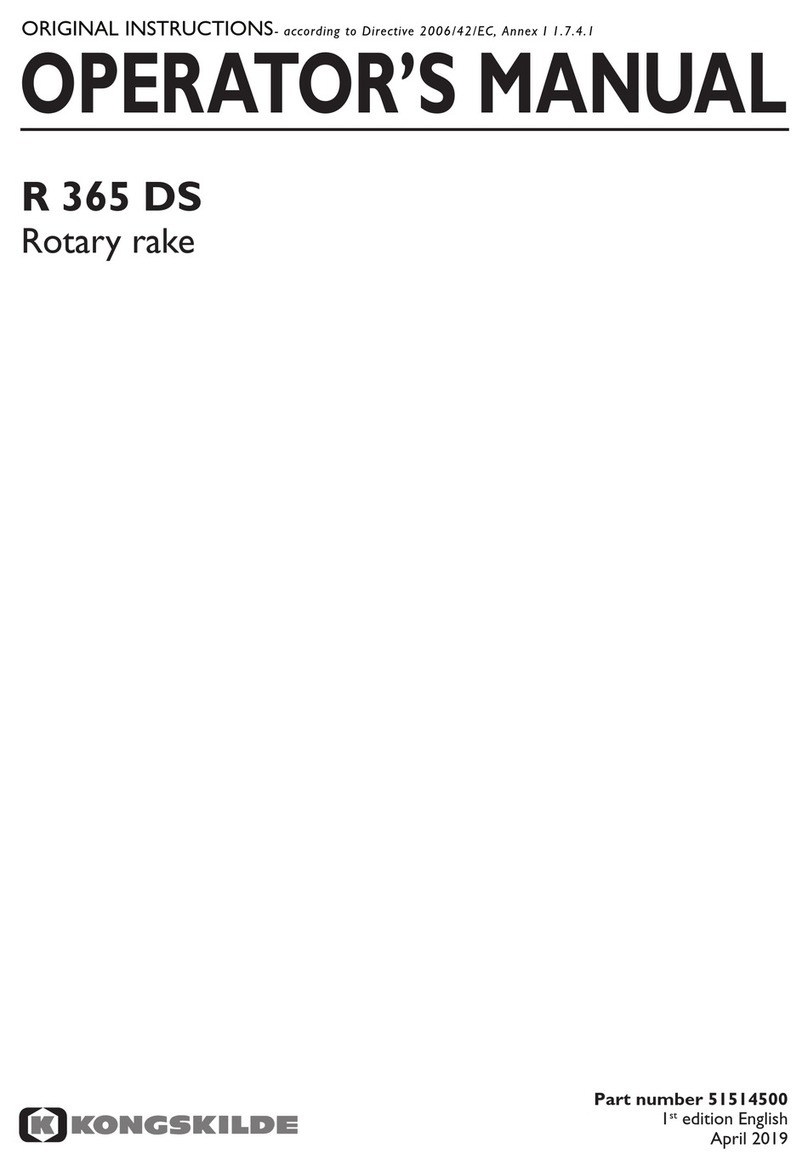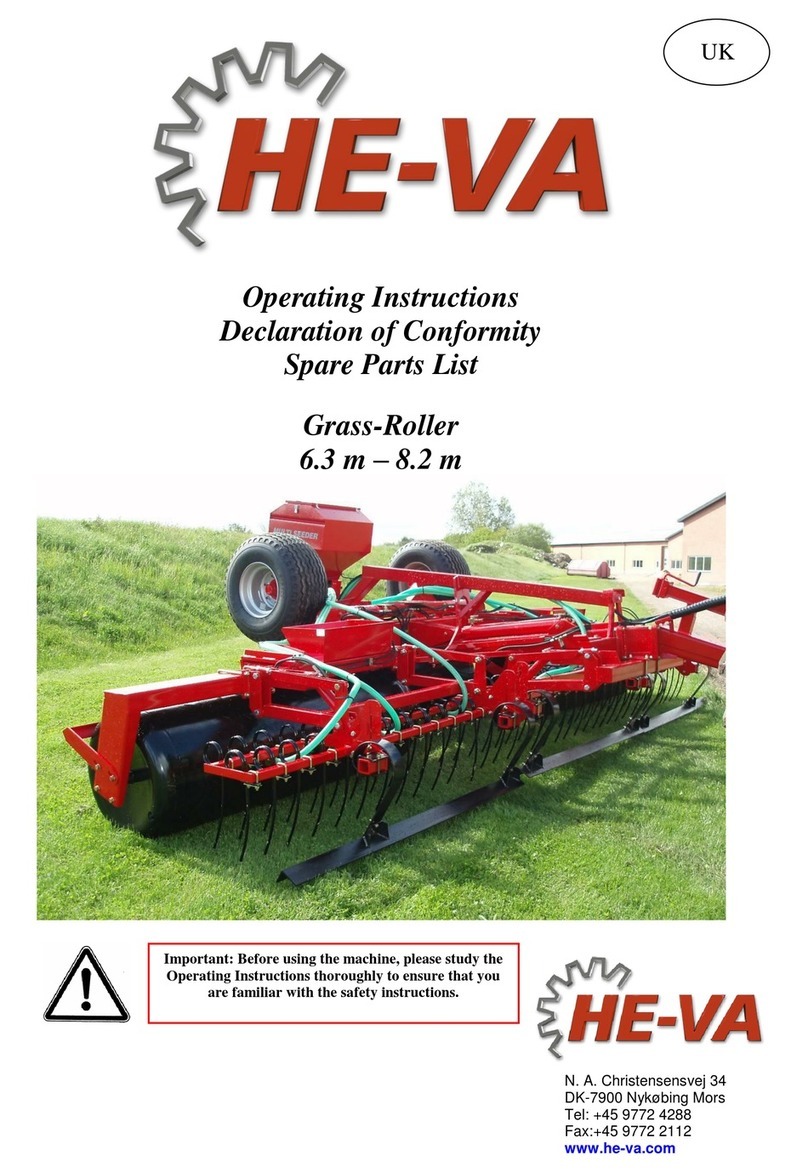Foerster HygieneBox Basic Installation instructions

Original Operating Manual
HygieneBox Basic /
HygieneBox Teat lock
TA version S 3.07 and higher
3. February 2021

2 Table of contents
Table of contents
1. Introduction . . . . . . . . . . . . . . . . . . . . . . . . . . . . . . . . . . . . . . . . . . . . . . . . . . . . . . . . . . . . . . . . .4
1.1 Functional description . . . . . . . . . . . . . . . . . . . . . . . . . . . . . . . . . . . . . . . . . . . . . . . . . . . . . 4
1.2 Manufacturer's contact details . . . . . . . . . . . . . . . . . . . . . . . . . . . . . . . . . . . . . . . . . . . . . . 4
2. Important safety instructions. . . . . . . . . . . . . . . . . . . . . . . . . . . . . . . . . . . . . . . . . . . . . . . . . . . 5
2.1 Intended use . . . . . . . . . . . . . . . . . . . . . . . . . . . . . . . . . . . . . . . . . . . . . . . . . . . . . . . . . . . . 5
2.2 Target group . . . . . . . . . . . . . . . . . . . . . . . . . . . . . . . . . . . . . . . . . . . . . . . . . . . . . . . . . . . . 5
2.2.1 Necessary qualifications of the owner . . . . . . . . . . . . . . . . . . . . . . . . . . . . . . . . . . 5
2.2.2 Necessary qualifications of the service technician . . . . . . . . . . . . . . . . . . . . . . . . . 5
2.3 Residual risks . . . . . . . . . . . . . . . . . . . . . . . . . . . . . . . . . . . . . . . . . . . . . . . . . . . . . . . . . . . 5
2.4 Your duties . . . . . . . . . . . . . . . . . . . . . . . . . . . . . . . . . . . . . . . . . . . . . . . . . . . . . . . . . . . . . 6
2.5 How am I warned of hazards? . . . . . . . . . . . . . . . . . . . . . . . . . . . . . . . . . . . . . . . . . . . . . . 7
2.5.1 What are the components of a hazard description? . . . . . . . . . . . . . . . . . . . . . . . . 7
2.5.2 Potentially fatal hazards or health hazards. . . . . . . . . . . . . . . . . . . . . . . . . . . . . . . 7
2.5.3 Material damage . . . . . . . . . . . . . . . . . . . . . . . . . . . . . . . . . . . . . . . . . . . . . . . . . . . 8
2.5.4 Safety signs . . . . . . . . . . . . . . . . . . . . . . . . . . . . . . . . . . . . . . . . . . . . . . . . . . . . . . 8
2.6 Safety devices. . . . . . . . . . . . . . . . . . . . . . . . . . . . . . . . . . . . . . . . . . . . . . . . . . . . . . . . . . . 9
2.7 Structural alterations . . . . . . . . . . . . . . . . . . . . . . . . . . . . . . . . . . . . . . . . . . . . . . . . . . . . . 10
3. Scope of delivery . . . . . . . . . . . . . . . . . . . . . . . . . . . . . . . . . . . . . . . . . . . . . . . . . . . . . . . . . . . 11
3.1 Scope of delivery of the HygieneBox Basic . . . . . . . . . . . . . . . . . . . . . . . . . . . . . . . . . . . 11
3.2 Scope of delivery of the HygieneBox Teat lock. . . . . . . . . . . . . . . . . . . . . . . . . . . . . . . . . 12
3.3 Scope of delivery of the HygieneBox Basic add-on parts . . . . . . . . . . . . . . . . . . . . . . . . . 13
4. Commissioning . . . . . . . . . . . . . . . . . . . . . . . . . . . . . . . . . . . . . . . . . . . . . . . . . . . . . . . . . . . . . 14
4.1 Installation. . . . . . . . . . . . . . . . . . . . . . . . . . . . . . . . . . . . . . . . . . . . . . . . . . . . . . . . . . . . . 14
4.1.1 HygieneBox Basic. . . . . . . . . . . . . . . . . . . . . . . . . . . . . . . . . . . . . . . . . . . . . . . . . 14
4.1.2 HygieneBox Teat Lock . . . . . . . . . . . . . . . . . . . . . . . . . . . . . . . . . . . . . . . . . . . . . 18
4.2 Connecting hoses . . . . . . . . . . . . . . . . . . . . . . . . . . . . . . . . . . . . . . . . . . . . . . . . . . . . . . .20
4.3 Connecting the antennas . . . . . . . . . . . . . . . . . . . . . . . . . . . . . . . . . . . . . . . . . . . . . . . . . 21
4.4 Install the ball valve externally . . . . . . . . . . . . . . . . . . . . . . . . . . . . . . . . . . . . . . . . . . . . . 22
4.5 Software updates . . . . . . . . . . . . . . . . . . . . . . . . . . . . . . . . . . . . . . . . . . . . . . . . . . . . . . .26
4.6 Activation in the setup. . . . . . . . . . . . . . . . . . . . . . . . . . . . . . . . . . . . . . . . . . . . . . . . . . . .26
4.7 Activating the auto teaching . . . . . . . . . . . . . . . . . . . . . . . . . . . . . . . . . . . . . . . . . . . . . . . 27
4.8 Cleaning . . . . . . . . . . . . . . . . . . . . . . . . . . . . . . . . . . . . . . . . . . . . . . . . . . . . . . . . . . . . . . 27
5. Hygiene . . . . . . . . . . . . . . . . . . . . . . . . . . . . . . . . . . . . . . . . . . . . . . . . . . . . . . . . . . . . . . . . . . . 28
6. Cleaning . . . . . . . . . . . . . . . . . . . . . . . . . . . . . . . . . . . . . . . . . . . . . . . . . . . . . . . . . . . . . . . . ...29
6.1 Cleaning agents . . . . . . . . . . . . . . . . . . . . . . . . . . . . . . . . . . . . . . . . . . . . . . . . . . . . . . . . 30
6.2 Automatic cleaning of the tubes . . . . . . . . . . . . . . . . . . . . . . . . . . . . . . . . . . . . . . . . . . . . 30
6.3 Teat cleaning. . . . . . . . . . . . . . . . . . . . . . . . . . . . . . . . . . . . . . . . . . . . . . . . . . . . . . . . . . . 31
6.4 Teat cleaning. . . . . . . . . . . . . . . . . . . . . . . . . . . . . . . . . . . . . . . . . . . . . . . . . . . . . . . . . . . 31
6.5 Manually starting tube cleaning . . . . . . . . . . . . . . . . . . . . . . . . . . . . . . . . . . . . . . . . . . . . 31
6.6 Cleaning the HygieneBox manually . . . . . . . . . . . . . . . . . . . . . . . . . . . . . . . . . . . . . . . . . 32

Table of contents 3
6.7 Cleaning the discharge tray . . . . . . . . . . . . . . . . . . . . . . . . . . . . . . . . . . . . . . . . . . . . . . . 32
7. Maintenance/servicing . . . . . . . . . . . . . . . . . . . . . . . . . . . . . . . . . . . . . . . . . . . . . . . . . . . . . . . 33
7.1 Safety instructions. . . . . . . . . . . . . . . . . . . . . . . . . . . . . . . . . . . . . . . . . . . . . . . . . . . . ...33
7.2 Maintenance intervals and activities . . . . . . . . . . . . . . . . . . . . . . . . . . . . . . . . . . . . . . . . . 33
7.2.1 Daily . . . . . . . . . . . . . . . . . . . . . . . . . . . . . . . . . . . . . . . . . . . . . . . . . . . . . . . . . . .34
7.2.2 Every 3 months. . . . . . . . . . . . . . . . . . . . . . . . . . . . . . . . . . . . . . . . . . . . . . . . . . . 34
7.2.3 Annually . . . . . . . . . . . . . . . . . . . . . . . . . . . . . . . . . . . . . . . . . . . . . . . . . . . . . . . . 34
8. Shutdown. . . . . . . . . . . . . . . . . . . . . . . . . . . . . . . . . . . . . . . . . . . . . . . . . . . . . . . . . . . . . . . . . . 35
8.1 Shut down teat cleaning . . . . . . . . . . . . . . . . . . . . . . . . . . . . . . . . . . . . . . . . . . . . . . . . . . 35
8.2 Temporary shutdown. . . . . . . . . . . . . . . . . . . . . . . . . . . . . . . . . . . . . . . . . . . . . . . . . . . . . 35
8.3 Permanent shutdown . . . . . . . . . . . . . . . . . . . . . . . . . . . . . . . . . . . . . . . . . . . . . . . . . . . . 36
9. Disposal . . . . . . . . . . . . . . . . . . . . . . . . . . . . . . . . . . . . . . . . . . . . . . . . . . . . . . . . . . . . . . . . ...37
9.1 Disposing of cleaning agent residues. . . . . . . . . . . . . . . . . . . . . . . . . . . . . . . . . . . . . . . . 37
9.2 Disposing of hoses . . . . . . . . . . . . . . . . . . . . . . . . . . . . . . . . . . . . . . . . . . . . . . . . . . . . . .37
9.3 Disposing of cables. . . . . . . . . . . . . . . . . . . . . . . . . . . . . . . . . . . . . . . . . . . . . . . . . . . . . .37
9.4 Disposal of the HygieneBox . . . . . . . . . . . . . . . . . . . . . . . . . . . . . . . . . . . . . . . . . . . . . . . 37
10. Faults and warnings . . . . . . . . . . . . . . . . . . . . . . . . . . . . . . . . . . . . . . . . . . . . . . . . . . . . . . . . . 38
10.1 Faults . . . . . . . . . . . . . . . . . . . . . . . . . . . . . . . . . . . . . . . . . . . . . . . . . . . . . . . . . . . . . . . . 38
10.1.1 HygieneBox valve . . . . . . . . . . . . . . . . . . . . . . . . . . . . . . . . . . . . . . . . . . . . . . . . . 38
10.1.2 Hoses circuit clean . . . . . . . . . . . . . . . . . . . . . . . . . . . . . . . . . . . . . . . . . . . . . . . . 38
10.1.3 Flushing circuit leaking. . . . . . . . . . . . . . . . . . . . . . . . . . . . . . . . . . . . . . . . . . . . . 39
10.2 Warnings. . . . . . . . . . . . . . . . . . . . . . . . . . . . . . . . . . . . . . . . . . . . . . . . . . . . . . . . . . . . . . 40
10.2.1 HygieneBox . . . . . . . . . . . . . . . . . . . . . . . . . . . . . . . . . . . . . . . . . . . . . . . . . . . . . 40
10.3 Diagnosis . . . . . . . . . . . . . . . . . . . . . . . . . . . . . . . . . . . . . . . . . . . . . . . . . . . . . . . . . . . . . 40
10.3.1 Checking stations . . . . . . . . . . . . . . . . . . . . . . . . . . . . . . . . . . . . . . . . . . . . . . . . . 40
10.3.2 Version . . . . . . . . . . . . . . . . . . . . . . . . . . . . . . . . . . . . . . . . . . . . . . . . . . . . . . . . . 41
11. Appendix . . . . . . . . . . . . . . . . . . . . . . . . . . . . . . . . . . . . . . . . . . . . . . . . . . . . . . . . . . . . . . . ...42
11.1 Checklist for commissioning and recommissioning . . . . . . . . . . . . . . . . . . . . . . . . . . . . . 42
11.2 Materials list . . . . . . . . . . . . . . . . . . . . . . . . . . . . . . . . . . . . . . . . . . . . . . . . . . . . . . . . . . . 42
11.3 Care and maintenance schedule/routine tasks. . . . . . . . . . . . . . . . . . . . . . . . . . . . . . . . . 43
11.4 Shutdown checklist . . . . . . . . . . . . . . . . . . . . . . . . . . . . . . . . . . . . . . . . . . . . . . . . . . . . . .44
11.5 Checking components for compliance with national regulations . . . . . . . . . . . . . . . . . . . 44
Index. . . . . . . . . . . . . . . . . . . . . . . . . . . . . . . . . . . . . . . . . . . . . . . . . . . . . . . . . . . . . . . . . . . . . . 45

4 Introduction
1. Introduction
This operating manual allows you to operate the HygieneBox/Teat lock Basic/Teat lock safely
in the intended manner.
The term HygieneBox/Teat lock is used for subsequent description in the operating manual.
• Please read this operating manual carefully before putting the HygieneBox/Teat lock into
service.
• Keep the operating manual readily available at all times and pass it on to the next user.
• Observe all of the warnings and safety instructions in this operating manual at all times.
1.1 Functional description
The HygieneBox Basic/Teat lock is an advanced version of a feeding station linked to the auto-
matic feeder.
Your advantages:
• Easy to clean due to its small surfaces.
• Sealed enclosure for optimum protection against dirt, dust and water.
• Teat locking for training young calves.
• Installation support for cables and hoses can be adapted to suit the position of the antenna
and the local conditions.
• No tools are required in order to exchange the teat.
• Automatic hose cleaning ensures a high degree of hygiene.
• Exterior cleaning of the teat after each calf.
1.2 Manufacturer's contact details
Our contact details:
Förster-Technik GmbH
Gerwigstrasse 25
78234 Engen, Germany
Phone: +49/ (0)7733/ 9406- 0
Fax: +49/ (0)7733/ 9406- 99
www.foerster-technik.de

Important safety instructions 5
2. Important safety instructions
2.1 Intended use
The purpose of the HygieneBox is to provide feed delivery to calves, provide support of the fully
automatic cleaning function, record the movements of the teat during consumption of the feed
and control the automatic feed delivery start function.
2.2 Target group
2.2.1 Necessary qualifications of the owner
The owner must be a trained farmer or have good practical experience in farming. He must
know the relevant accident prevention regulations and generally accepted safety regulations.
2.2.2 Necessary qualifications of the service technician
Only trained service technicians are authorized to install, commission, maintain and repair the
HygieneBox/HygieneBox Teat Lock.
Service technicians are specialists with the appropriate qualifications. Service technicians are
able to assess the work assigned to them and detect potential risks on the basis of their tech-
nical training as well as their knowledge of the relevant standards. They are familiar with the
relevant accident prevention regulations, generally accepted safety regulations and country-
specific standards and provisions.
2.3 Residual risks
Hazards to health and life caused by the HygieneBox:
WARNING!
Danger from electric current
The automatic feeder to which the HygieneBox is connected is electrically operated.
►You must observe the general precautions for handling electrical equipment.
• Read the operating manual before operating the HygieneBox.
• Keep children away from the HygieneBox.
• Only use genuine spare parts from the manufacturer.
• Turn off the automatic feeders and disconnect the power plug before carrying out any main-
tenance or cleaning work on the HygieneBox.
• The electrical system of the HygieneBox can present the following special hazards:
•Electrical discharge. If there is an electrical discharge or voltage breakdown, electric
current flows through parts of the HygieneBox that are normally insulated. Touching the
unit can cause a fatal electric shock. The HygieneBox must be checked regularly for
electrical safety in compliance with national regulations (repeated inspection). Make
sure that a 30 mA residual current device (RCD) is installed.

6 Important safety instructions
•
•Short circuit, indirect contact. If there is a short circuit, current at many times the level
of the operating current can flow. Touching the unit can cause a fatal electric shock.
Make sure to install fuse protection (provided by the customer) and an earth leakage cir-
cuit breaker (ELCB) of 30 mA in compliance with local regulations.
•Burns. The solenoid valves can reach temperatures of up to 100°C. Touching them can
cause burns. Do not touch the solenoid valves during operation.
•Poisoning, difficulty in breathing, suffocation. Liquids used to clean the teats may con-
tain substances that are hazardous to human health. Avoid direct contact and always wear
protective gloves and goggles when handling these liquids.
•Rough ambient conditions. The HygieneBox operates in a rough working environment.
Damage of any kind can result in hazards. Regularly check the HygieneBox for damage and
have any damage rectified as necessary by a service technician.
Material damage caused by the HygieneBox
The following material damage can be caused by the HygieneBox:
•Infection. Improper cleaning can result in calves becoming infected by pathogens at the
teat. This can lead to medical costs or cause the death of the calves. Observe the specifi-
cations issued by the manufacturer of the cleaning agent that is used.
2.4 Your duties
The owner has a duty to:
• Prevent misuse by children.
• Keep children, youths, and people with restricted physical, sensory and mental abilities
away from the HygieneBox.
• Carefully read and understand this operating manual before putting the HygieneBox into op-
eration.
• Only allow operating personnel to work with/on the HygieneBox who:
• Are familiar with the basic operational safety and accident prevention regulations.
• Have been given instructions on working with/on the HygieneBox.
• Have read and understood this operating manual.
• Comply with the operational safety and accident prevention regulations.
• When cleaning the HygieneBox, observe the safety instructions stipulated in the safety data
sheet for the cleaning agent.
• Wear the safety equipment specified in the safety data sheet for the cleaning agent, such as
goggles and chemical-proof protective gloves, when cleaning the HygieneBox.
• Provide the required personal protective devices for the operator.
• Operate the HygieneBox only as intended.
• Keep all safety signs on the HygieneBox in legible condition and renew any that become
damaged.
• Desist from changing the design or functions of the HygieneBox.
• Operate the HygieneBox only when it is in perfect functional condition.

Important safety instructions 7
• Subject the HygieneBox to regular visual inspection for possible damage and have it recti-
fied by a service technician if necessary.
• Check the safety devices applied to the HygieneBox regularly for perfect working order.
• Make sure the HygieneBox is operated only with safety devices installed.
• Make sure that the HygieneBox and all parts which can be manually cleaned or which are
needed for cleaning procedures are easy to access at all times.
• Protect the HygieneBox and all corresponding cables from exposure to sunlight.
• Use only original accessories, original spare parts and original wearing parts. These are
available from your dealer.
• Keep the working environment of the HygieneBox clean and tidy.
• Deactivate teat cleaning during frost.
2.5 How am I warned of hazards?
Hazards are indicated directly on the HygieneBox by safety labels (warning signs, instruction
and prohibition notices), and in the operating manual by specially marked hazard descriptions.
The warnings for hazards that can cause death or injury to people are emphasized more than
those for material damage, for example through the colors, hazard words or symbols used.
Safety labels are an important element of the overall HygieneBox safety concept. They provide
warnings about hazards and explain how to avoid them.
Make sure that all the specified safety labels are fitted to your HygieneBox and that they are in
a legible condition. If the safety labels are difficult to read, replace them immediately. New safety
labels are available from Förster-Technik GmbH.
2.5.1 What are the components of a hazard description?
A hazard description always consists of the following elements:
• Hazard word (danger, warning, caution, attention)
• Type of hazard (what can happen?)
• Location of hazard (where can it happen?)
• Actions necessary for preventing the hazard (what should I do?).
2.5.2 Potentially fatal hazards or health hazards
Depending on their severity and the probability of them occurring, hazards that can cause death
or injury to people are indicated by a hazard symbol (warning triangle with exclamation
mark) and the following hazard words:
DANGER!
The word DANGER indicates an imminent hazard that will lead to death or serious injury.
Warning signs in the operating manual: DANGER (white text on red background).

8 Important safety instructions
WARNING!
The word WARNING indicates a potentially hazardous situation that could lead to death
or serious injury.
Warning signs in the operating manual: WARNING (black text on orange background).
CAUTION!
The word CAUTION indicates a potentially hazardous situation that could lead to minor
injury.
Warning signs in the operating manual: CAUTION (black text on yellow background).
2.5.3 Material damage
NOTICE!
The word ATTENTION indicates possible material damage. The HygieneBox or anything
in its vicinity, such as a calf, may be damaged or injured.
Prohibition notice on the HygieneBox: a pictogram crossed out in red in a white circle with a red
border indicates something you are not allowed to do.
Operating manual: white text on blue background
2.5.4 Safety signs
Different safety labels are attached at the hazardous points on the HygieneBox. Warning signs,
prohibition and instruction notices.
What are warning signs?
Warning signs consist of:
• A pictogram in a yellow triangle illustrating the potential hazard.
What are prohibitory signs?
Prohibitory signs have a pictogram of the prohibited action in a red circle with a line
through it. See the adjacent example. They graphically depict the prohibited ac-
tion. In this example, the hose with a line through it means that you may not use
high-pressure cleaners.
What are instruction notices?
Instruction notices show a pictogram of what you are being instructed to do in a
blue circle. They illustrate what you have to do. In the example, the pictogram
means that you must always disconnect the plug first.

Important safety instructions 9
2.5.4.1 Warning signs on the machine
Danger of death by electric shock
Burning/scalding
Warning about injuries to the hand
No spraying
2.6 Safety devices
The safety devices at the machine are an important part of the safety concept and help prevent
accidents.
• Do not remove or change the safety devices unless the corresponding safety instructions
have been complied with.
• Put the machine into service only once all safety devices have been fitted and are in the
guard position!

10 Important safety instructions
2.7 Structural alterations
The HygieneBox must not be subjected to any unauthorized alterations at any time.
Only genuine spare parts, wearing parts and accessories may be used, since any warranty
claims will otherwise be void.

Scope of delivery 11
3. Scope of delivery
3.1 Scope of delivery of the HygieneBox Basic
1 HygieneBox Basic
2 Antenna cable
3 HygieneBox Basic extra items
4 Cleaning valve
5 Short hose for cleaning valve
6 Long hose for cleaning valve
7 Water hose
8 Discharge tray extra items
9 Discharge tray with nozzle
1
2
3
4
5
6
7
8
9

12 Scope of delivery
3.2 Scope of delivery of the HygieneBox Teat lock
1 Discharge tray
2 Discharge tray extra items
3 HygieneBox Teat Lock extra items
4 HygieneBox Teat Lock
5 Water hose
6 Antenna cable
7 Hoses for teat cleaning
8 Screws
9 Valve with bracket for teat cleaning
1
2
3
4
5
6
7
8
9

Scope of delivery 13
3.3 Scope of delivery of the HygieneBox Basic add-on parts
1 Template
2T-piece
3 Feeding pump
4 Holder for feeding pump
5 Gully hose
6 Flushing hose
7 Pressure-reducing valve
8Seal
9 External ball valve
10 Discharge pipe
11 Holder for discharge pipe
12 Screw
13 Nut
14 Washer
15 Grommet
16 Cable fastener
1
2
3
4
5
7
8
9
10
11
12
13
14
15
16
6

14 Commissioning
4. Commissioning
This chapter describes how to retrofit the HygieneBox/Teat lock.
Retrofitting of the HygieneBox/Teat lock may only be performed by a service technician.
When installing a HygieneBox please refer to the Installation chapter 4.1.1 "HygieneBox Basic"
- 14.
When installing a HygieneBox Teat lock please refer to the Installation chapter 4.1.2 "Hygiene-
Box Teat Lock" - 18.
The end user must provide you with the operating manual for the automatic feeder and the safe-
ty data sheets for cleaning agent.
The appendix contains a checklist with all points you have to observe during commissioning or
recommissioning 11.1 "Checklist for commissioning and recommissioning" - 42.
NOTICE!
►The automatic feeder must be updated to the latest program version in order to use the Hy-
gieneBox with all its functions.
4.1 Installation
4.1.1 HygieneBox Basic
Note: If a HygieneBox Teat lock is installed, this chapter can be skipped.
This is how you attach the discharge tray, teat cleaner and HygieneBox basic:
1. Unscrew the suction bracket and discharge tray from the front plate.
Fig. 4-1 Installed suction bracket and installed discharge tray
1 Suction bracket
2 Discharge tray
2. Screw the template over the existing opening via the centering hole (existing hole)
1
2

Commissioning 15
Fig. 4-2 Template with drilling holes attached to the front plate
1 Template
2 Centering screw
3. Drill holes into the front plate using the template for positioning.
Fig. 4-3 Drilling holes into the front plate through the template
Fig. 4-4 Pilot hole diameter
1
2

16 Commissioning
4. Repeat the procedure on the opposite side (steps 3 and 4).
5. Fasten the discharge tray to the front plate using the screws supplied.
Fig. 4-5 Discharge tray fastened to the front plate with small screws
1 Large screws
2 Small screws
6. Screw the discharge tray tightly to the front plate using the large screws.
Note: Screw the discharge tray to the front plate using the large screws and then the small
screws.
7. Fit the short hose to the top of the cleaning valve and the long hose to the back of the clean-
ing valve.
1Shorthose
2 Long hose
3 Cleaning valve
8. Screw the cleaning valve to the front plate and connect the long hose to the left socket, the
short hose to the right socket.
9. Route the short hose to the right pluggable fitting on the discharge tray.
1
2
1
2
3

Commissioning 17
Fig. 4-6 Cleaning valve installed on the front plate
1 Pluggable fitting for long hose
2 Pluggable fitting for short hose
3 Cleaning valve
10. Screw the Hygiene Box Basic onto the front plate
Note: The Hygiene Box can be rotated if the pipe bend needs to be positioned on the oppo-
site side.
Fig. 4-7 Hygiene Box installed on the front plate
1 Hygiene Box
2 Cleaning valve power supply
11. Plug the power supply cable into the cleaning valve.
12. Screw the teat onto the Hygiene Box.
1
2
3
1
2

18 Commissioning
4.1.2 HygieneBox Teat Lock
This is how you attach the discharge tray, teat cleaner and HygieneBox Teat Lock:
1. Using the screws supplied, fasten the discharge tray to the front plate with teat lock.
Note: Screw the discharge tray to the front panel using the large screws first and then the
small screws.
2. If there are no holes for the teat block HygieneBox Teat Lock on the front plate, use the spe-
cial drilling template to pre-drill the required holes.
3. Fit the short hose to the top of the cleaning valve and the long hose to the back of the clean-
ing valve.

Commissioning 19
1Shorthose
2 Long hose
3 Cleaning valve
4. Screw the cleaning valve to the front panel and connect the long hose to the left cleaning
nozzle, the short hose to the right cleaning nozzle.
1 Cleaning nozzle
5. Using the screws supplied, fasten the HygieneBox Teat Lock to the front plate.
Note: The HygieneBox can be rotated if the pipe bend needs to be positioned on the oppo-
site side.
1
2
3
1

20 Commissioning
6. Plug the power supply cable into the cleaning valve.
7. Screw the teat onto the HygieneBox.
4.2 Connecting hoses
Connect the hoses as follows:
1. Open the HygieneBox.
2. Connect the suction hose and the return hose to the connectors within the housing.
Fig. 4-8 Opened Hygiene Box with suction line and return line
1 Suction line
2 return line
3. Route the hoses out through the elbow. The suction line leads to the automatic feeder, the
return line to the external ball valve.
1
2
This manual suits for next models
1
Table of contents
Other Foerster Farm Equipment manuals
